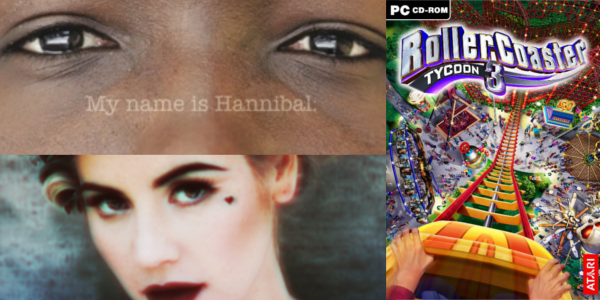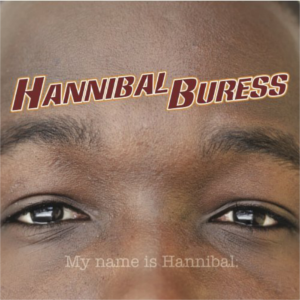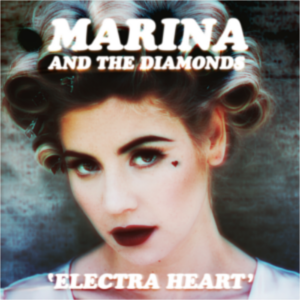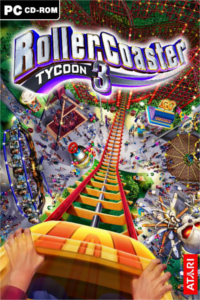What Else We’re Loving — April 2014

Images courtesy of hannibalhannibal.com, marinaandthediamonds.com, and rollercoastertycoon.com.

I’ve been loving the humble humor of Hannibal Buress’ stand up. On Youtube I click together his career with bleary cell phone footage of college shows and high definition clips of Comedy Central specials, trying to triangulate the moment where he “made it big.” In 2007 Craig Ferguson welcomed Hannibal to the Late Late Show stage calling him a comedian who has been making the rounds all over his native Chicago. The Youtube video’s title is excited, pleasantly surprised: “Hannibal Buress on national TV!” Hannibal wears a yellow tee shirt and jeans and talks about how the crack dealers and twenty-four hour pawn shops in his neighborhood are in cahoots: “Regular people don’t wake up at four in the morning like, I feel like selling my microwave.” Thirty seconds later he’s giving props to the guy who invented Courier New font. In 2011 Paul Shaffer’s CBS Orchestra ushers Hannibal onto the Late Show with David Letterman with smooth funk. Hannibal’s shirt is buttoned up and tucked into his pants. He’s wearing a jacket to match, no tie. His voice somewhere between nonchalant and intimate, he tells the audience he has too much pickle juice in his apartment. He’s working off the same act he performed four years earlier, which coalesced into his first stand up album, 2010’s My name is Hannibal. That album begins with Hannibal mentioning that, walking into the theater, he heard a guy looking up at the marquee ask, “Hannibal Buress? I don’t even know who that is.”
Hannibal Buress has “made it.” The world just hasn’t noticed yet. Hannibal doesn’t mind either way. His hour-long special Live from Chicago, aired earlier this year on Comedy Central, opens with a joke about Streetwise, Chicago’s homeless newspaper: “This special’s going on national TV — all of my jokes are gonna be weird, specific Chicago shit.” But Hannibal’s cool should not be mistaken for indifference. He’s thrilled to have “made it,” wherever exactly that is and however much the world cares. At one point during his new special, while talking about pissing himself after taking ecstasy, a hip-hop beat drops as Hannibal declares his plan to “dance that shit dry.” He confides in his audience how excited he is to be using musical cues and plays the punch line twice more, grooving to the music and smiling wide. “I see a woman very confused by the situation,” he stops to say. “Don’t worry, you’re just seeing a man living out his dream in that joke.”
Hannibal tells good jokes. His stories wander and his punch lines don’t surprise as much as they satisfy. When he finishes his Late Show set in the Youtube clip from 2011, Letterman shakes Hannibal’s hand and tells him, “that was very strong.” Offhand delivery and chilled out timbre disguise years on the comedy club circuit, grinding and polishing. Hannibal loves the craft of jokes, and I think he loves that grind. My favorite Youtube video of his is called “Hannibal Buress vs. hipster heckler.” A man throws trash onto stage and spins his girlfriend, her legs around his shoulders, in front of Hannibal as he tries to host a weekly comedy show at The Knitting Factory in Brooklyn. Hannibal says the heckler would “have three handlebar mustaches if he could,” and has the bouncers push him out the door. Hannibal wipes his forehead, leans against the wall, and sighs: “Awh man, why do I do this shit still?” That was in 2010. Four years later, he’s still hosting the weekly comedy show at The Knitting Factory.
— Will Lathrop

This week I’ve been greatly appreciating the latest album by Marina and the Diamonds, Electra Heart. The album was actually released almost two years ago, but I had a tiring week and the album’s smart, never-surrender attitude kept me chugging. The “and the Diamonds” is somewhat of a misnomer — there is no group, just one artist, Marina Diamandis. She’s a singer/songwriter of Welsh origin, whose songs about fame, womanhood, love, and identity have topped the charts in the United Kingdom. In the United States, she’s mostly known for the most poppy of her pop songs, the sarcasm of which is sometimes overlooked. These catchy, heart-racing electronic tunes are intelligent and sad. There’s bravery in them, too. Diamandis has seen the allure of consumer culture and celebrity, and she admits of buying into some of it. She’s determined, though, to struggle against that tide and to be herself, a good person. If you like your pop songs deep, your sexy singers feminist, and your introspection fun, you should check out Electra Heart. The UK version has a few tracks that aren’t on the American one. They’re all excellent, if a little heartbreaking.
— Justin Poser

This past week I have played an excessive amount of RollerCoaster Tycoon 3 Platinum. I purchased the game a year ago when I discovered that Macs came with an App Store and the App Store came with games. I remembered enjoying RollerCoaster Tycoon when I was seven, particularly the thrill of murdering large crowds of tiny people with malfunctioning roller coasters. My tastes haven’t changed fundamentally since then. The version I bought came with the Soaked! and Wild! expansion packs, which allowed me to build theme parks with water rides and exotic animal exhibits. This lead to some awkward situations, like a water slide malfunctioning and tossing guests (“peeps” in RollerCoaster Tycoon-speak) into lion cages and into the center of the track of a high-speed roller coaster. I soon realized that my memories of the game were incorrect. RollerCoaster Tycoon does not allow for any murdering. Peeps can fall thousands of feet onto the track of a monorail and proceed to be run-over and the only harm they will suffer are a few stars that appear around their heads and softly flit until they disappear.
I play in Career mode, which means every scenario begins with a park, usually struggling with debt or some other inconvenience. I have to “save” the park by completely a number of objectives. There are three advancing levels of objectives: Apprentice, Entrepreneur, and Tycoon. Once I complete the Tycoon objectives, I receive a “Congratulations” and a gold trophy. The real reward, though, is having enough money to create the roller coasters of my dreams. I build monstrosities whose “Nausea Ratings” are “Extremely High” because the tracks plunge thousands of feet underground before looping back up again in endless helixes. No peeps will ride them, but I do with the CoasterCam, which captures footage of the ride in motion from the point of view of the cars on the track. My park eventually becomes overstuffed with roller coasters, and I struggle with the idea of leaving them all behind to begin again with another struggling park. At these moments, which usually occur at 5 am when I am too tired to sleep, I watch the family of peeps I created in the Peep Designer. I have constructed my family: myself, my sister, my mother, my stepfather, and my father. I send their thoughts to the main console and watch them wander through my park on endless loops. My sister tells me that “Large Pizza is a really good value,” which means that the price of that item is too low. My mother says, “I am not paying that much to ride RUBBER DUCKY NINJAS.” This indicates that the admission price of that ride is too low. My peep family complains about the weather when it rains. They express their fear that a ride will be too intense for them. They tell me that they are not thirsty when they pass a drink vendor. Despite the repetitiveness, I continue to follow them. I want to know what rides they like and whether they think my animals are healthy and my park is clean. I want to know if Viewing Gallery 2 is too busy or if Aqua Blasters 1 is not exciting enough because I can make these attractions better for them, make them happy.
Every peep knows only a single joke. One of them will look at an animal in my enclosure and say, “Mary M. looks like Tracy the Turkey” or whatever animal catches her eye. I actually not certain if this is a joke or if it is supposed to be complimentary. My peep family does the same. They tell me, “Lolita D. looks like Rusty the Raccoon” and I listen.
— Lolita De Palma